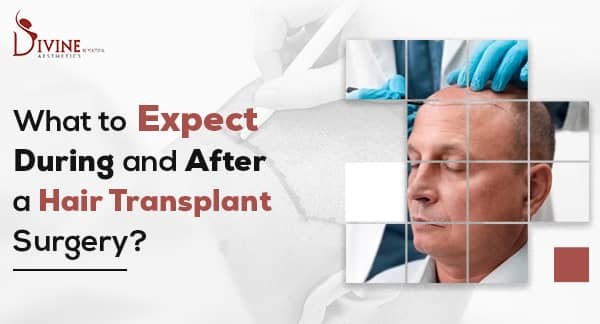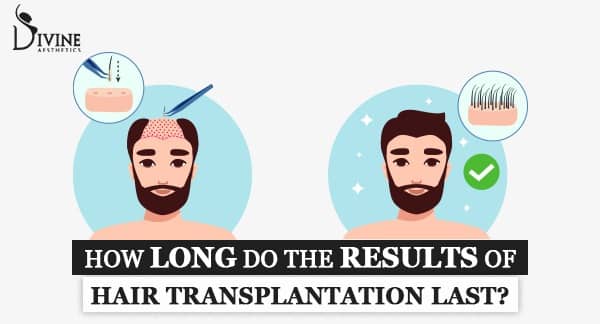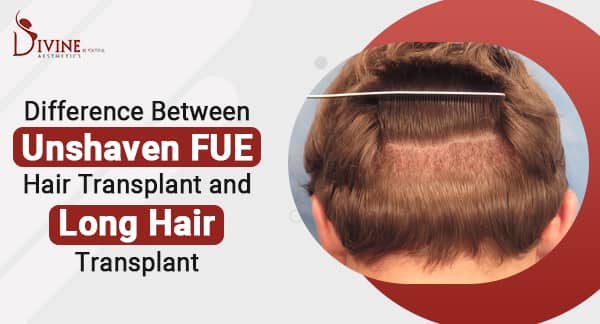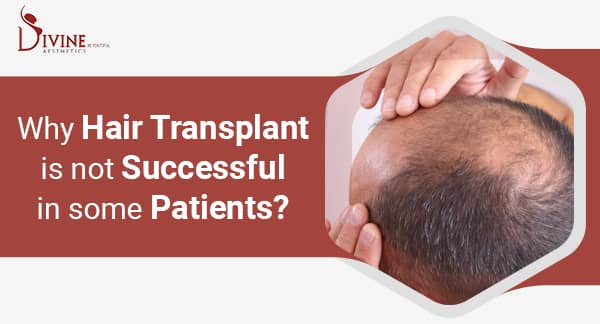What to Expect During and After a Hair Transplant Surgery
Hair loss can be a devastating experience, and it can lead to a decrease in self-confidence and self-esteem. While there are a variety of treatments available, hair transplant surgery has become an increasingly popular option for individuals looking to restore their hairline. If you’re considering a hair transplant surgery, it’s essential to know what kind of an expectation from hair transplant you should have during and after the procedure. In this blog post, we’ll discuss everything you need to know about expect during and after a hair transplant surgery, including the different types of hair transplant procedures, the process, recovery, and aftercare.
Types of Hair Transplant Procedures:
Predominantly, there are only two types of hair transplant procedures that people often end up undergoing-follicular unit transplantation (FUT) and follicular unit extraction (FUE). In FUT, a strip of skin with hair follicles is removed from the back of the scalp, and the hair grafts are then transplanted into the balding areas. This technique leaves a linear scar at the donor site, which is why FUE has become a more popular option. In FUE, individual hair follicles are extracted from the donor area using a small, circular punch, and transplanted into the recipient area. The FUE procedure typically leaves tiny, circular scars that are almost invisible to the naked eye. Another prominent approach for hair transplant is the combination hair transplant method. This method is a combination of the FUE and FUT treatments.
The Hair Transplant Journey –
Here’s how to prepare for your hair transplant:
Preparing for a hair transplant surgery involves several steps to ensure the best possible outcome. First and foremost, patients should consult with their surgeon to discuss their goals, medical history, and expectation from the hair transplant. The surgeon will typically perform a physical examination of the scalp and hair to assess the extent of hair loss and determine the most appropriate treatment plan. In addition, patients should stop smoking and avoid alcohol and certain medications that can increase the risk of bleeding. The surgeon may also recommend that patients stop taking certain supplements or herbal remedies that can interfere with the healing process. On the day of the surgery, patients should wear comfortable, loose-fitting clothing and bring any necessary personal items such as a hat or sunglasses.
The Procedure:
Before the procedure, the surgeon will discuss the goals of the surgery and evaluate the patient’s hair loss pattern. The surgeon will also take into consideration the patient’s age, hair texture, and thickness of the hair strands to determine the best course of action. The surgeon may also suggest other treatments, such as medication, to complement the hair transplant surgery.
On the day of the procedure, the patient will receive a local anesthetic to numb the scalp. The surgeon will then use either FUT or FUE to extract hair grafts from the donor area. The grafts will be transplanted into the balding areas, and the surgeon will carefully place each hair graft to ensure a natural-looking hairline.
The length of the procedure can be attributed to the amount of baldness and the number of grafts required to cover the bald area. A typical hair transplant surgery can take anywhere from four to eight hours. Patients can expect to return home on the same day of the procedure.
Recovery:
After the procedure, patients may experience swelling, discomfort, and minor pain around the scalp. The surgeon will provide instructions on how to care for the scalp, such as how to clean the hair, and when to start taking pain medication. Patients will also need to avoid any strenuous activities for at least a week following the procedure.
During the first few weeks, patients can expect some shedding of the transplanted hair, which is a natural part of the process. The transplanted hair will then begin to grow after a few months, and patients can expect to see significant results within six to nine months.
Aftercare:
After the hair transplant surgery, patients will need to follow a few simple aftercare instructions to ensure proper healing and maximize the results. These instructions may include:
- Avoiding any strenuous activities or heavy lifting for at least a week after the procedure.
- Avoiding any activities that could cause the scalp to sweat excessively, such as exercising or sauna.
- Taking any prescribed medication as directed by the surgeon.
- Keeping the scalp clean and dry, as instructed by the surgeon.
- Avoiding any hair care products that contain harsh chemicals or fragrances.
- Wearing a hat or a scarf to protect the scalp from the sun’s harmful rays.
- Avoiding any contact sports or activities that could result in a head injury.
Potential Risks and Complications :
Here are some potential risks and complications involved when it comes to hair transplant surgery –
- Infection: The surgical site does pose a risk of infection, but it can be tackled with antibiotics.
- Scarring: While FUE leaves minimal scarring, FUT can leave a minimal linear scar at the donor site.
- Swelling: Swelling around the scalp and forehead is common after the procedure, but it usually subsides within a few days.
- Pain and discomfort: Patients may experience some pain and discomfort after the procedure, but this can be managed with medication.
It’s important to discuss any concerns or potential risks with your surgeon before the procedure. Patients should also carefully follow the aftercare instructions to reduce the risk of complications.
Conclusion:
Hair transplant surgery can be an effective way to restore hair growth and boost self-confidence. Understanding what to expect during and after the procedure is essential to ensure a successful outcome. Patients should carefully follow all aftercare instructions to minimize the risk of complications and maximize the results. With proper care and patience, patients can expect to see significant improvement in their hair growth within a few months of the procedure.
Tips for maintaining the results of a hair transplant surgery –
After a hair transplant surgery, it is important to follow the surgeon’s post-operative instructions carefully to ensure optimal healing and hair growth. Patients should avoid touching or scratching the scalp, as this can damage the newly transplanted hair follicles. In addition, patients should avoid strenuous exercise or activities that can increase blood flow to the scalp. The surgeon may also recommend certain hair care products and techniques to promote healthy hair growth, such as using a gentle shampoo and avoiding harsh chemicals or heat styling tools. It is important to remember that the full results of a hair transplant surgery can take several months to become apparent and that continued maintenance and care are necessary to maintain the new hair growth.
How genetics can impact the success of a hair transplant surgery –
Genetics are one of the primary factors that determine a person’s likelihood of experiencing hair loss. Hair loss can be caused by a variety of genetic factors, including variations in genes that regulate hair growth and follicle size. These genetic factors can impact the success of a hair transplant surgery, as they can affect the viability of the hair follicles and the rate of hair growth. However, skilled surgeons can often work around these genetic factors by carefully selecting healthy hair follicles for transplantation and using advanced techniques to ensure optimal growth and healing.
The importance of choosing an experienced hair transplant surgeon –
Choosing the right surgeon is essential for achieving optimal results from a hair transplant surgery. Patients should look for a board-certified plastic surgeon or dermatologist with extensive experience in hair transplant surgery. In addition, patients should ask for before-and-after photos of previous patients to evaluate the surgeon’s skill and expertise. It is also important to discuss the surgeon’s approach to the procedure, including the type of technique used, the expected results, and the potential risks and complications. Patients should feel comfortable asking questions and expressing their concerns to ensure that they are making an informed decision about their treatment. By taking the time to find the right surgeon, patients can achieve the best possible results from their hair transplant surgery.
Why get a Hair Transplant at Divine Cosmetic Surgery?
Divine Cosmetic Surgery is a premier hair transplant clinic that offers patients the highest level of care and expertise. Led by Dr. Amit Gupta, a board-certified plastic surgeon with over a decade of experience in hair transplant surgery, the clinic is dedicated to helping patients achieve natural-looking, long-lasting results. Dr. Gupta and his team use the latest techniques and technology to ensure optimal results, and they work closely with each patient to develop a personalized treatment plan that meets their unique needs and goals. In addition, the clinic offers a range of other cosmetic and reconstructive procedures, allowing patients to address multiple concerns in one convenient location. Whether you are experiencing hair loss due to genetics, aging, or other factors, Divine Cosmetic Surgery can help you restore your confidence and achieve the full, healthy head of hair you deserve.
Now book a consultation with us at Divine Cosmetic Surgery.
FAQs –
Q: Is hair transplant surgery painful?
Ans. The procedure is performed under local anesthesia, so patients should not experience any pain during the surgery itself. However, there may be some discomfort or soreness in the days following the procedure.
Q: How long does it take to see results from a hair transplant surgery?
Ans: The full results of a hair transplant surgery can take several months to become apparent, as the transplanted hair follicles must go through a natural growth cycle. Patients may start to see some new hair growth after a few weeks, but it can take up to a year or more to see the full benefits of the procedure.
Q: Is a hair transplant surgery permanent?
Ans: The transplanted hair follicles are typically permanent and should continue to grow and produce hair in the recipient area for many years. However, it is important to note that other factors such as aging, genetics, and hormonal changes can still impact hair growth and may require additional treatments or maintenance over time.
Q: Can anyone undergo a hair transplant surgery?
Ans: No, not everyone can qualify as a candidate for a hair transplant. Patients should be in good overall health and have sufficient hair in the donor area to provide adequate grafts for transplantation. In addition, patients should have a realistic expectation from hair transplant and be committed to following the surgeon’s post-operative instructions for optimal healing and hair growth.
Q: Are there any alternative treatments for hair loss other than hair transplant surgery?
Ans: Yes, there are a variety of non-surgical treatments for hair loss, including medications, topical treatments, and low-level laser therapy. These treatments can help slow or stop hair loss and may even promote new hair growth in some cases. However, they may not be as effective as hair transplant surgery for restoring a full head of hair.











